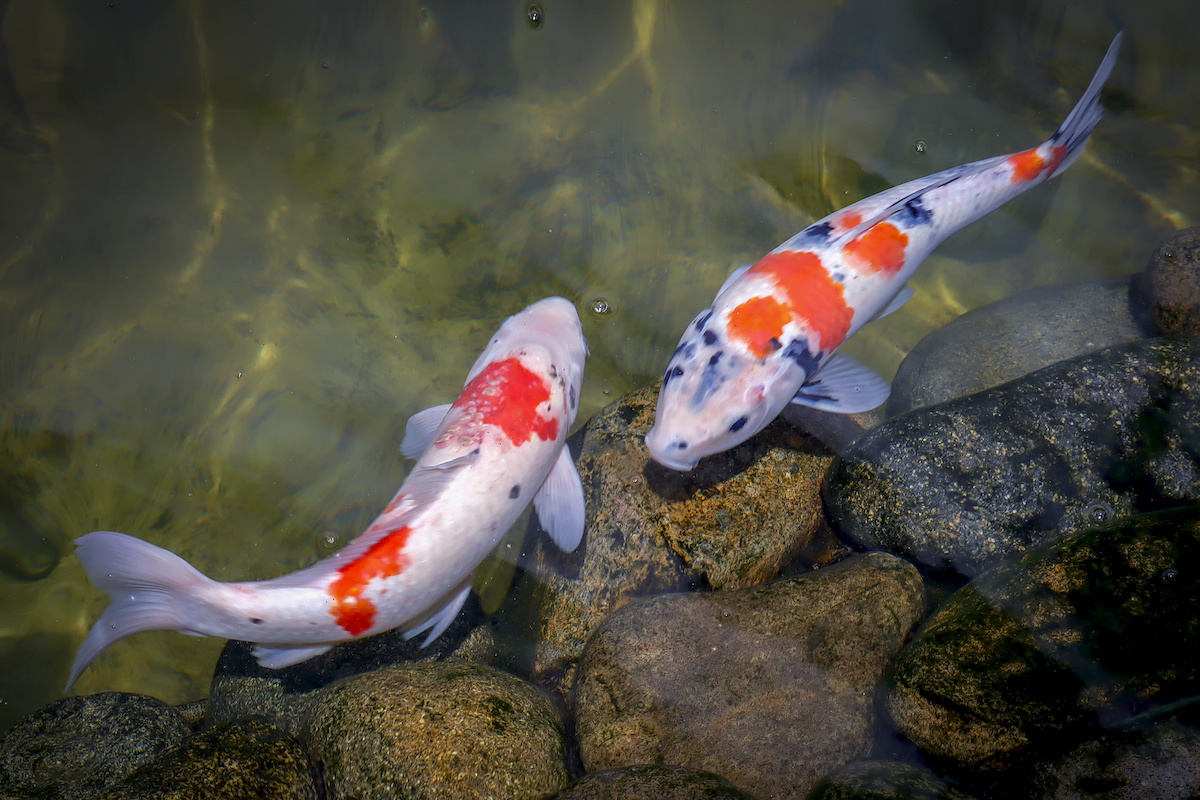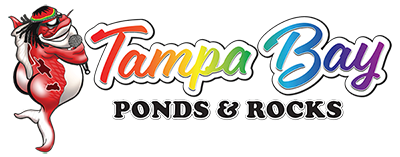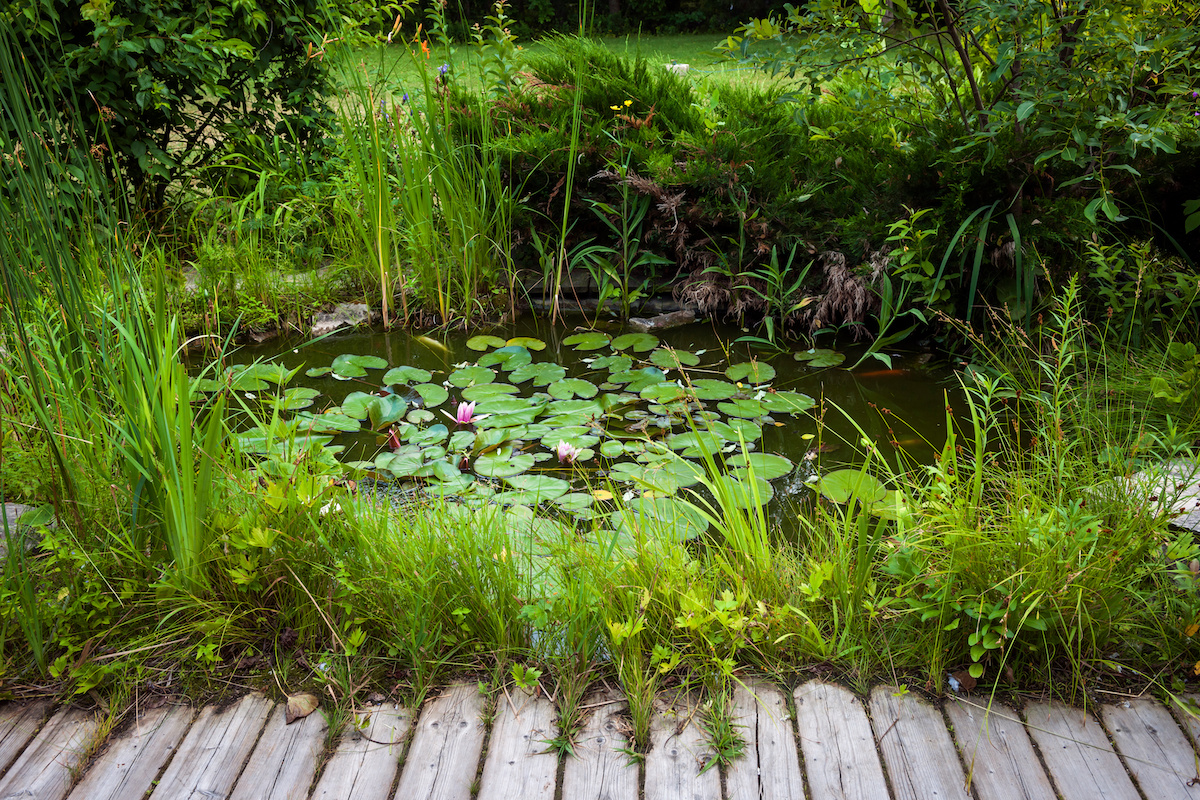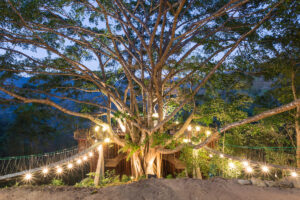Backyard ponds are becoming more and more popular for those who want something distinctive in their landscaping. In addition to the aesthetic appeal, ponds can also serve a practical purpose in that they help reduce mosquito populations. They also provide a habitat for fish.
If you’ve ever thought about creating a backyard pond for your home, you’re in for a treat! These are some of the most beautiful and relaxing parts of any garden, bringing harmony and tranquility to any space.
Let’s dive in on how to create backyard ponds for beginners.
Choosing The Location Of Your Pond
The first thing you need to decide on is where to place your backyard pond. You need to place it in an area that gets plenty of sunlight, as this will be necessary for the plants and fish to survive. The soil needs to be well-drained, too, to prevent excess runoff.
Building a pond in a prominent corner of the garden will help to draw the eye to it and make it a central feature. If you want to keep your pond completely hidden, you can consider placing it in a quiet corner of the garden.
You can choose from three different types of locations for your pond:
- Above ground
- A pond that is buried
- A pond that is sunk into the ground
For the most part, the choice depends on the size of your garden, and what you want your pond to look like. The appearance of your backyard pond leads us to the next point: the design for backyard ponds.
Pond Design
The next step to consider with backyard ponds is deciding on a design. There are countless ways you can approach this, ranging from a simple rock-lined pool to a very formal and decorative pond complete with waterfalls. Many homeowners may prefer the idea of a natural-looking pond. Other homeowners enjoy colors, patterns, or paved edges that you’ll find in a swimming pool.
Koi pond designs come in an array of shapes and sizes, depending on your needs and the space you have available. You can opt for a long, rectangular shape or a round shape, and you can even opt for a fish pond design that is partially sunken into the ground.
However, your pond should also be a natural part of the landscape and fit in with the rest of the garden. Having a natural-looking pond in your backyard will give you the chance to attract wildlife such as birds and frogs, making your backyard a haven for many different walks of life.
Many pond owners also enjoy the look of a stone or rock border surrounding the pond. You can create your own rock borders, or you can use a pre-formed pond liner and pond kits. This is actually a good idea if you have a curved or odd-shaped pond.
Preventing Backyard Pond Flooding
The elevation of your pond will determine the amount of sunlight your pond will receive. Your pond will flood in rainstorms and hurricanes, and you will lose water to groundwater leaching or evaporation. In the summer, you may wish to limit your water loss through evaporation by reducing the surface area of your pond. Therefore, the depth of your pond should be approximately one-third of the pond’s surface area.
You can use floating covers to reduce the surface area of your pond in the summer, and use disappearing covers during the winter months. If you have smaller ponds that are used as ornamental water features and do not contain fish or aquatic plants, you can use a pond blanket to cover your water feature all year.
Considering the Cost of Backyard Ponds
How much does a backyard pond cost? This answer has a tremendous number of variables, making it nearly impossible to give a precise answer.
For most homeowners, budgeting for the initial cost of a backyard pond will be the most difficult part. The initial cost of building a backyard pond can range from a few hundred dollars to a few thousand, depending on the size of the pond, the materials you use, and the complexity of the design.
However, you will also want to account for the overall cost of the project, as a small pond can be very inexpensive to build and maintain, while large ponds can become very costly in the long run.
Doing so will allow you to consider all of the costs associated with your pond. Aside from the installation costs, the size of the pond is going to be the biggest factor in determining the cost.
More expensive ponds will have more features and will likely be larger than a pond of the same price. However, there is a lot more to the cost of ponds than just adding a few more features.
As the size of the pond increases, so do the expenses that you will incur.
How Much Does Small Backyard Ponds Cost?
Small ponds are usually inexpensive and they are small enough to be heated by the sun’s rays.
Small ponds generally do not require additional costs, except for the cost of the fish, plants, and other decorations. You’ll need to keep long-term maintenance in mind as well.
These ponds are often very easy to build and they can be built right in your backyard!

Choosing Fish and Aquatic Plants for Your Backyard Pond
One of the most exciting elements of a backyard pond is determining how to decorate it with aquatic life. You also have options for fish to inhabit your pond, including koi fish and goldfish.
The following are some of the basics associated with the fish and plant life that you can add to your pond:
- When choosing plants for your pond, you will want to look for plants specifically made for water gardening. These plants are often sold in bulk, rather than individually.
- Buying aquatic plants in bulk can make for a more economical choice for your pond.
- Fish are another consideration for your pond. Koi and goldfish are two popular fish choices for backyard ponds.
Depending on your location and how you plan to manage your pond, you may be able to choose certain types of fish that grow to a certain size. For example, koi fish can grow to a length of 20+ inches, so this may be a good choice for larger ponds.
On the other hand, goldfish in the wild will usually grow to about 14 inches. This may be a better choice for smaller ponds.
Koi fish will live in a backyard pond, but they prefer a pond with a concrete bottom since they can’t swim over its sides. Another choice is to decide you’d rather have a pond that’s inhabited by birds instead of fish. You can buy birds like ducks and geese from local farms.
Excavating the Pond
You have your pond design in mind as well as the budget. The next step is to dig a hole for your pond. The hole needs to be deep enough to accommodate the pond and plants, so start by digging a hole roughly the same width as your pond.
The depth of the hole will depend on the kind of plants that you are planting. If you are planning on planting large plants, then you will need to dig your hole deeper than if you plan on planting smaller plants. The depth of the hole depends on the type of plants you will be growing, so dig as deep as required for your specific plants.
For a pond, it is best to have it a little deeper than you want because the ground will settle once you stop digging.
The depth of your pond depends on the type of plants and fish you want to keep. Koi fish require that the pond be between 8 and 10 feet deep, while goldfish prefer ponds that are 6 to 8 feet deep. The depth should be at least 1 ½ times the length of your tallest fish.
Keeping Pond Water Clean
A pond will fill with dirt and debris if the pond does not have a bottom drain to help remove sediment from the pond. A pump in the deepest section of the pond will circulate the water to keep your pond water clean. The pond bottom should be covered with filter material to prevent the pump from clogging with sediment.
Get Started with Backyard Ponds
Here at Tampa Bay Pond & Rocks, we can get you started with the backyard pond of your dreams. Contact us for help or stop by to start shopping today! We were selected by Redfin as a top pond & rock expert! See the article we were featured in: The Complete Spring Home Maintenance Checklist


